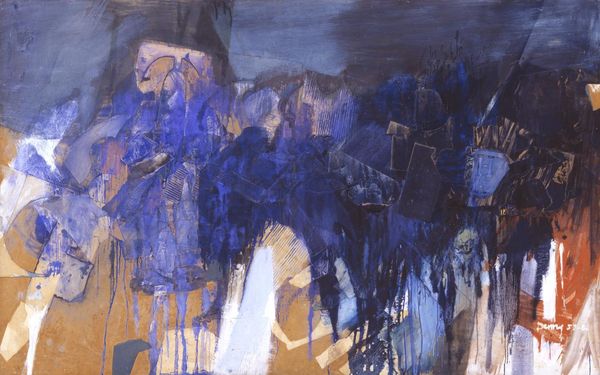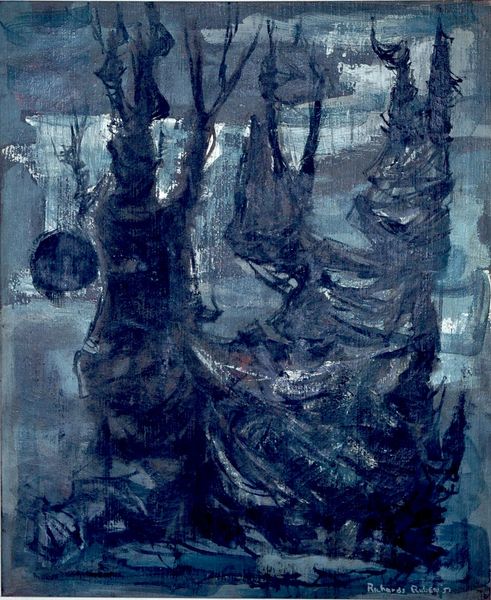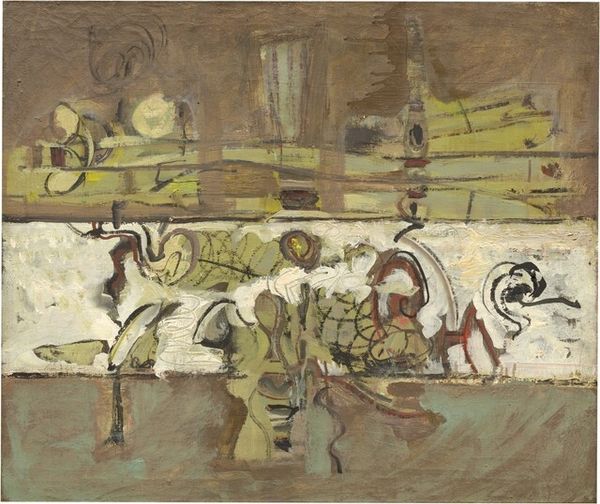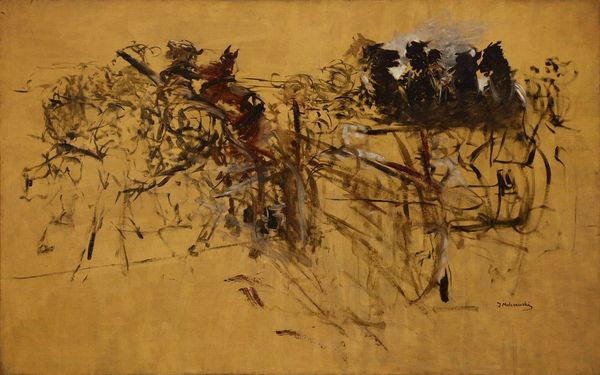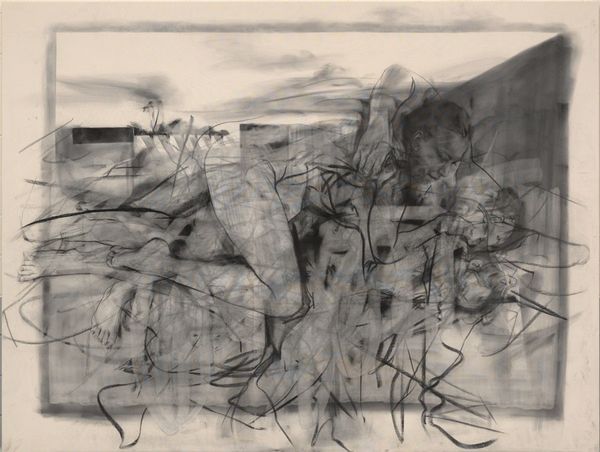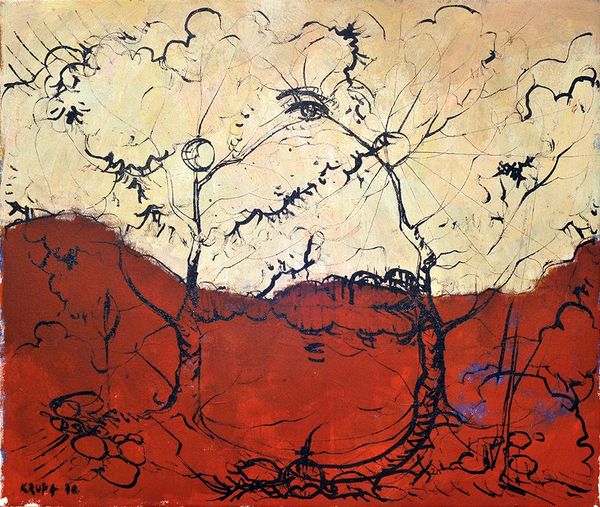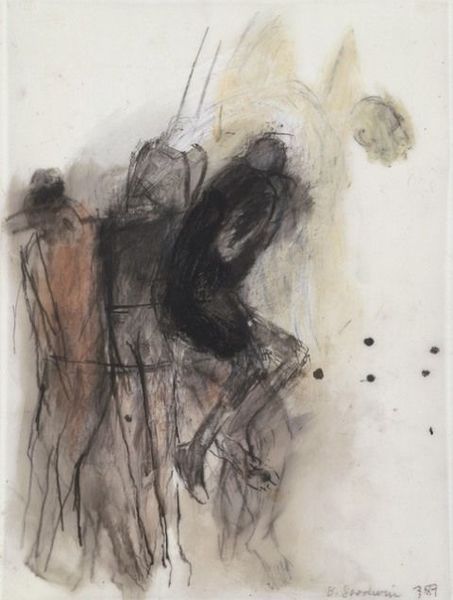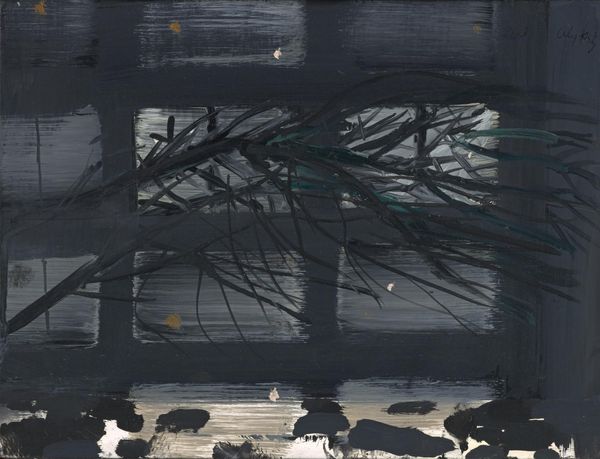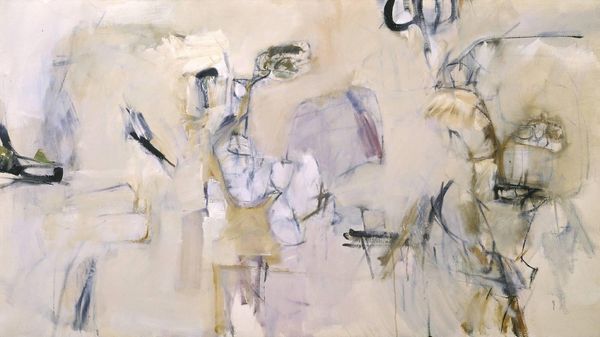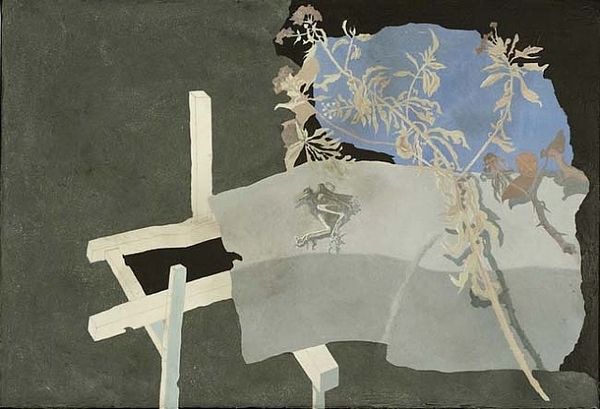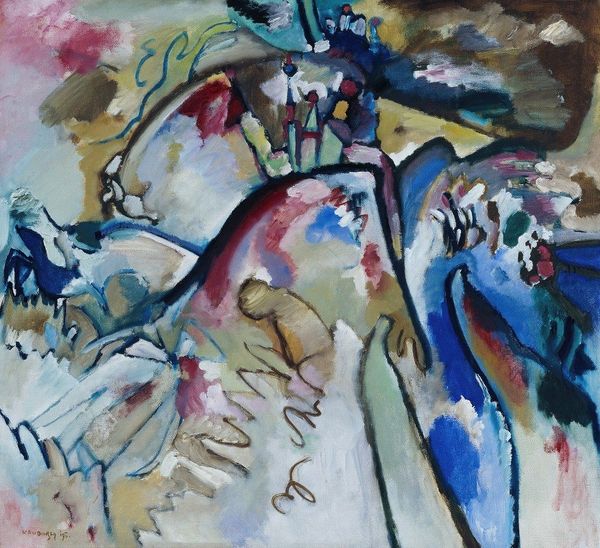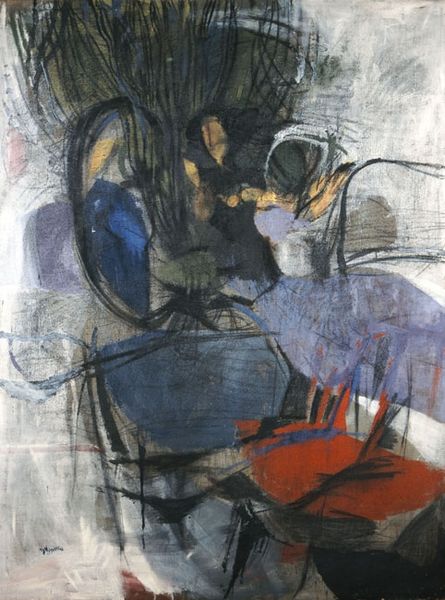
Dimensions: support: 792 x 1067 mm
Copyright: © Tate | CC-BY-NC-ND 4.0 DEED, Photo: Tate
Editor: Alan Reynolds's "Keeper of the Dark Copse II" has a somewhat eerie feel, with its ghostly figure and stark contrasts. What do you see in this piece, considering its historical context? Curator: This work reflects the anxieties of the post-war period. Reynolds's simplified forms hint at a deeper unease about the human presence in a changed landscape. Do you notice how the figure is almost transparent? Editor: Yes, it’s like they’re fading away! So, the figure represents a broader societal anxiety? Curator: Precisely! Reynolds uses this image to explore the psychological impact of that era. Editor: I never considered it that way; I was focused on the atmosphere. Curator: Understanding the socio-political climate really unlocks a new perspective. Editor: Definitely! This has broadened my understanding significantly.
Comments
tate 7 months ago
⋮
http://www.tate.org.uk/art/artworks/reynolds-keeper-of-the-dark-copse-ii-n06149
Join the conversation
Join millions of artists and users on Artera today and experience the ultimate creative platform.
tate 7 months ago
⋮
In his descriptive landscapes of the early 1950s Reynolds aimed to reveal the essential vitality of the natural world. In this painting, the plants and trees are transformed into anthropomorphic presences. Standing among these dark and looming forms is the solitary figure of the keeper. Reynolds’s careful balancing of the muted, earthy colours and his measured arrangement of forms create an eerie stillness that adds to mystery of this secret world. Gallery label, September 2004
